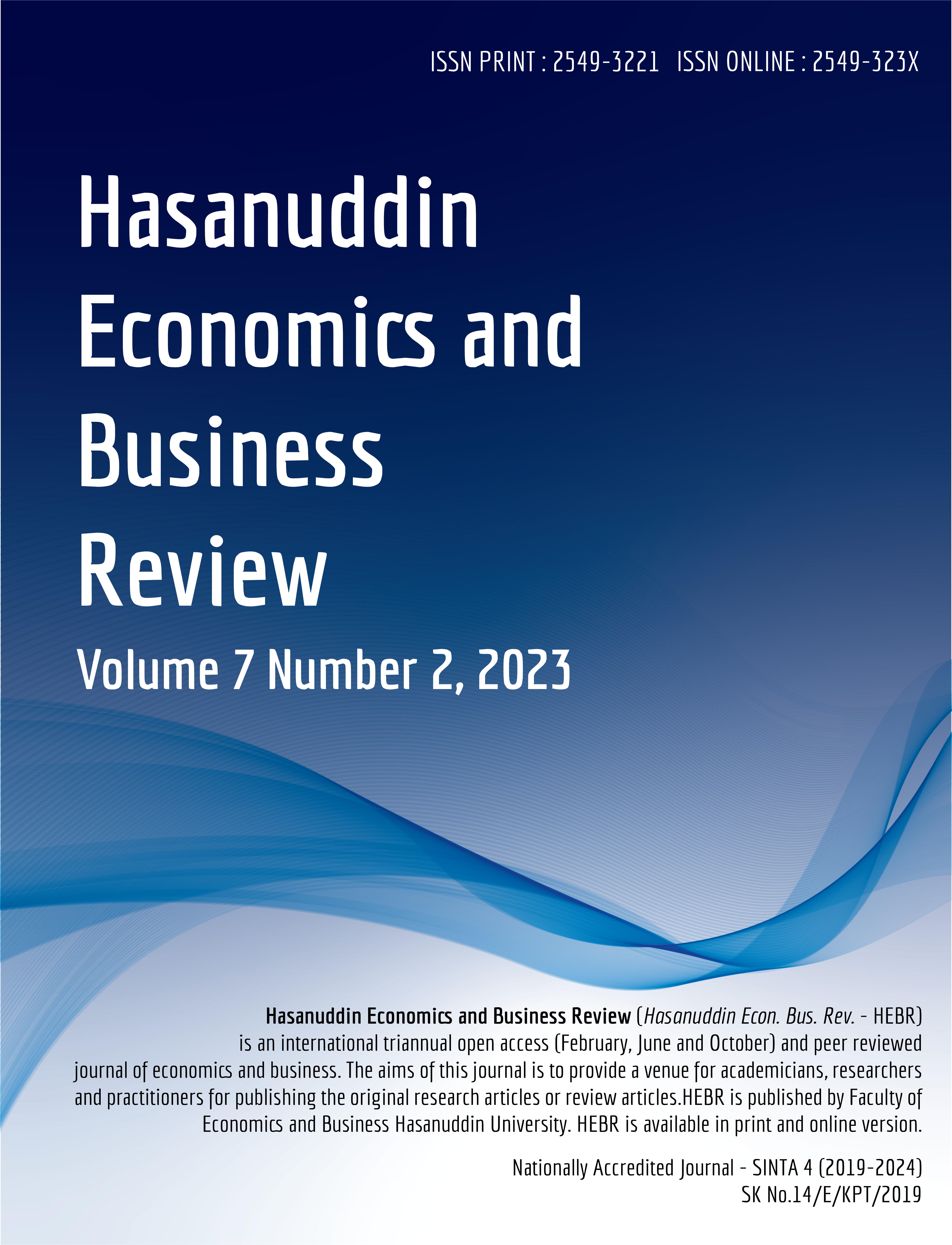Abstract
This study aimed to examine and analyze the effect of administrative innovation on business competitiveness, technical innovations on business competitiveness, process innovation on business competitiveness, and product innovation on business competitiveness. This research conducted at manufacturing industry in Surabaya City, Indonesia. The number of samples was 100 business units, where the top manager or middle managers as the respondent. Methods of analysis use both descriptive statistical and Structural Equation Model (SEM). Data processed by IBM AMOS software. The results show that innovation strategy which consists of administrative innovation, technical innovation, process innovation, and product innovation can enhance organizational competitiveness in the manufacturing industry context. Administration innovation has a positive effect on business competitiveness. Technical innovation has a positive effect on business competitiveness. Process innovation has a positive effect on business competitiveness. Then, product innovation has a positive effect on business competitiveness. Process innovation has greater influence in improving business competitiveness compared to other innovation strategies.References
Badan Pusat Statistik (BPS). (2016). Surabaya Municipality in Figures 2016. BPS Kota Surabaya.
Cooper, J. R. (1998). A multidimensional approach to the adoption of innovation. Management Decision, 36(8), 493–502.
Riyadi, S., & Cottam, S. A., Ensor, J., & Band, C. (2001). A benchmark study of strategic commitment to innovation. European Journal of Innovation Management, 4(2), 88–94.
Damanpour, F. (1991). Organizational innovation: A meta-analysis of effects of determinants and moderators. Academy of Management Journal, 34(3), 555–590.
Esti, R., & Suryani, D. (2008). Potret industri kreatif Indonesia. Economic Review, (212), Jakarta.
Fontana, A. (2009). Innovate We Can!. Jakarta: Grasindo.
Han, S. B., Chen, S., & Ebrahimpour, M. (2007). The impact of ISO 9000 on TQM and business performance. Journal of Business and Economic Studies, 13(2), 111–120.
Jungwoo, L. (2004). Discriminant analysis of technology adoption behavior: A case of internet technologies in small business. Journal of Computer Information System, 12, 57–66.
Krajewski, L. J., Ritzman, L. P., & Malhotra, K. (2010). Operation Management: Processes and Supply Chains (9th ed.). USA: Pearson Prentice Hall Inc.
Mat, A., & Razak, R. C. (2013). Technological innovation implementation: A proposed model on organizational learning capability with moderating effect of knowledge complexity. African Journal of Business Management, 7(12), 926–935.
Munizu, M. (2014). Improving the competitive advantage through information technology: A case at food and beverage industries in Indonesia. Journal of Economics, Business, and Accountancy Ventura, 17(3), 325–332.
Porter, M. E. (1985). Competitive Advantage: Creating and Sustaining Superior Performance. USA: The Free Press.
Rogers, E. M. (1995). Diffusion of Innovations (4th ed.). USA: The Free Press.
Sabir, H. M., & Kalyar, M. N. (2013). Firm’s innovativeness and employee job satisfaction: The role of organizational learning culture. Interdisciplinary Journal of Contemporary Research in Business, 4(9), 670–686.
Schumpeter, J. (1934). The Theory of Economic Development. Cambridge, MA: The MIT Press.
Sekaran, U. (2008). Research Methods for Business: A Skill Building Approach (5th ed.). New York: John Wiley & Sons, Inc.
Lee, S., Park, G., Yoon, B., & Park, J. (2010). Open innovation in SMEs: An intermediated network. Research Policy, 30(1), 290–300.
Sutarno. (2012). Serba-serbi Manajemen Bisnis (Business Management Solutions) (1st ed.). Yogyakarta: Graha Ilmu.
Wibisono, D. (2006). Manajemen Kinerja (Performance Management). Jakarta: Erlangga.
Zahra, S. A., & Das, S. R. (1993). Innovation strategy and financial performance in manufacturing companies: An empirical study. Production and Operation Management, 2(1), 15–37.
Zarei, V., & Baghban, M. (2014). Innovation implementation to support Iranian SMEs: Case study in oil & gas beneficiary company of Maroon. International Journal of Research in Social Sciences, 4(3), 111–120.
Authors who publish in this journal agree to the following terms:
- The journal holds the copyright for each article published with work licensed simultaneously under a Creative Commons Attribution 4.0 International License, which allows others to share the work with an acknowledgement of the authorship and early publication of the work in this journal.
- Authors must agree to the copyright transfer agreement by checking the Copyright Notice column at the initial stage when submitting the article.

